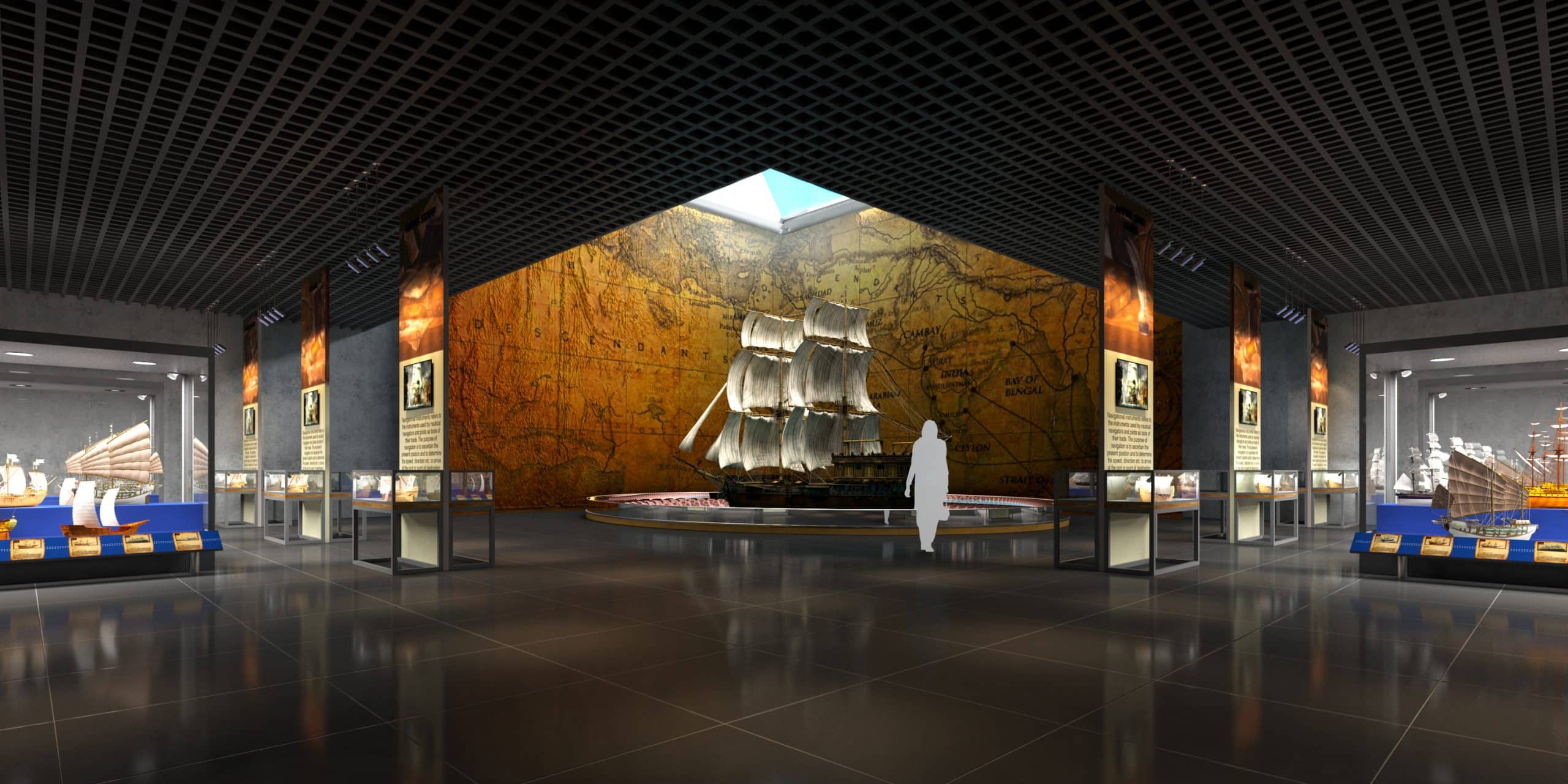
National Maritime Heritage Complex
Lothal, Gujarat, India
Celebrating Maritime Heritage
The Government of India and its Ministries of Shipping and of Culture conceived and commissioned the creation of a National Maritime Heritage Complex at Lothal, the town where part of the ancient Indus Valley civilization was excavated and identified by the UN as an international heritage site. Being established as the world’s most ancient man-made dockyard, Lothal was the favored site for this project, which aims to showcase, inform and educate about the long, rich and diverse maritime history of the Indian subcontinent. Attractions within the complex include light-and-sound shows, boat rides, and an experiential theme park.
Site Area : 375 Acres
Builtup Area : 10,09,267 SF
Services : Masterplanning, Architecture (DPR), Engineering (DPR), Landscape Design (DPR)
Collaboration : Purcel & Jones Lang Lasalle (JLL)
Share ►
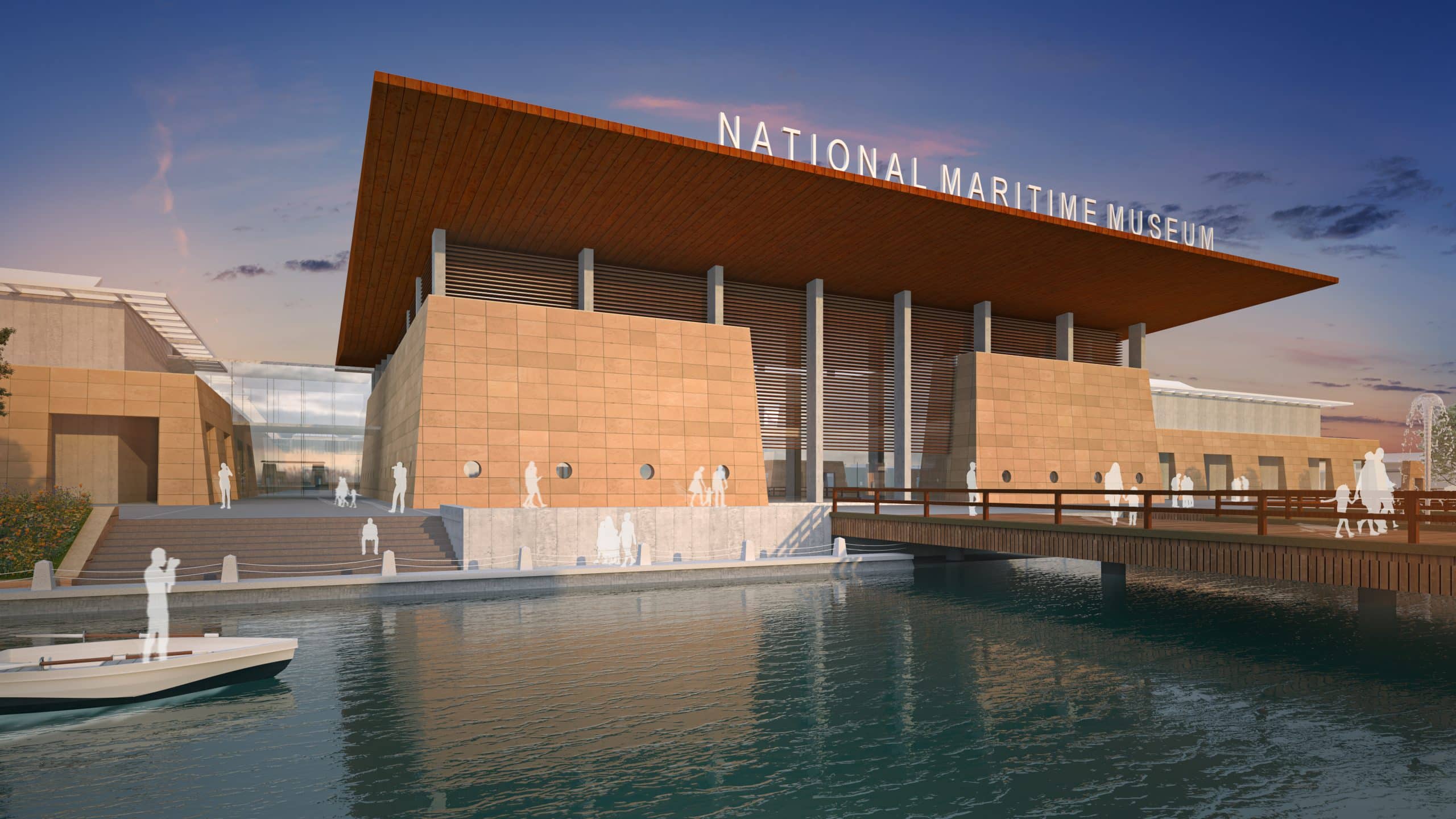
Fun-Learn and Experience Rich History, Join the Celebration of Maritime Heritage
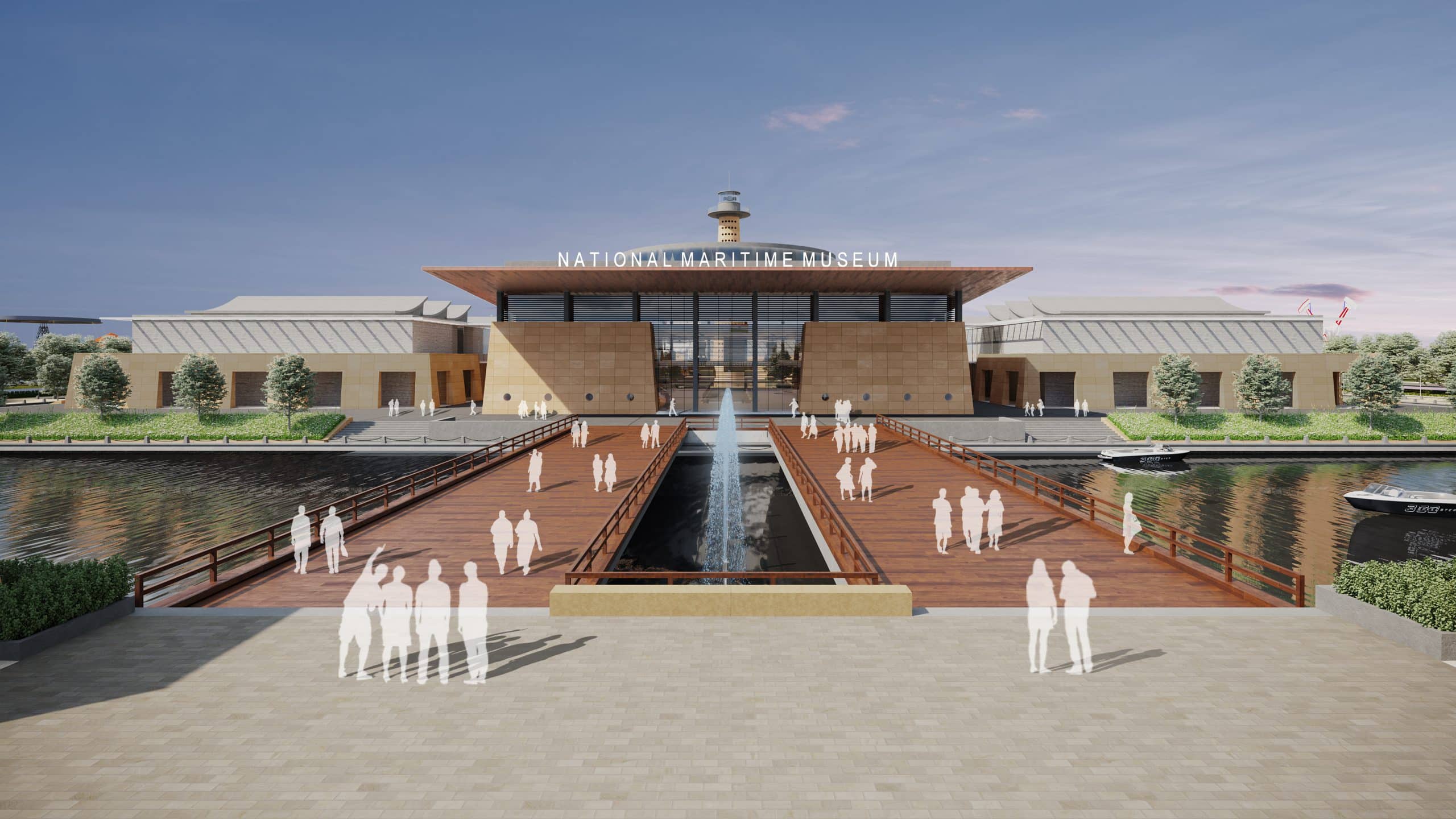
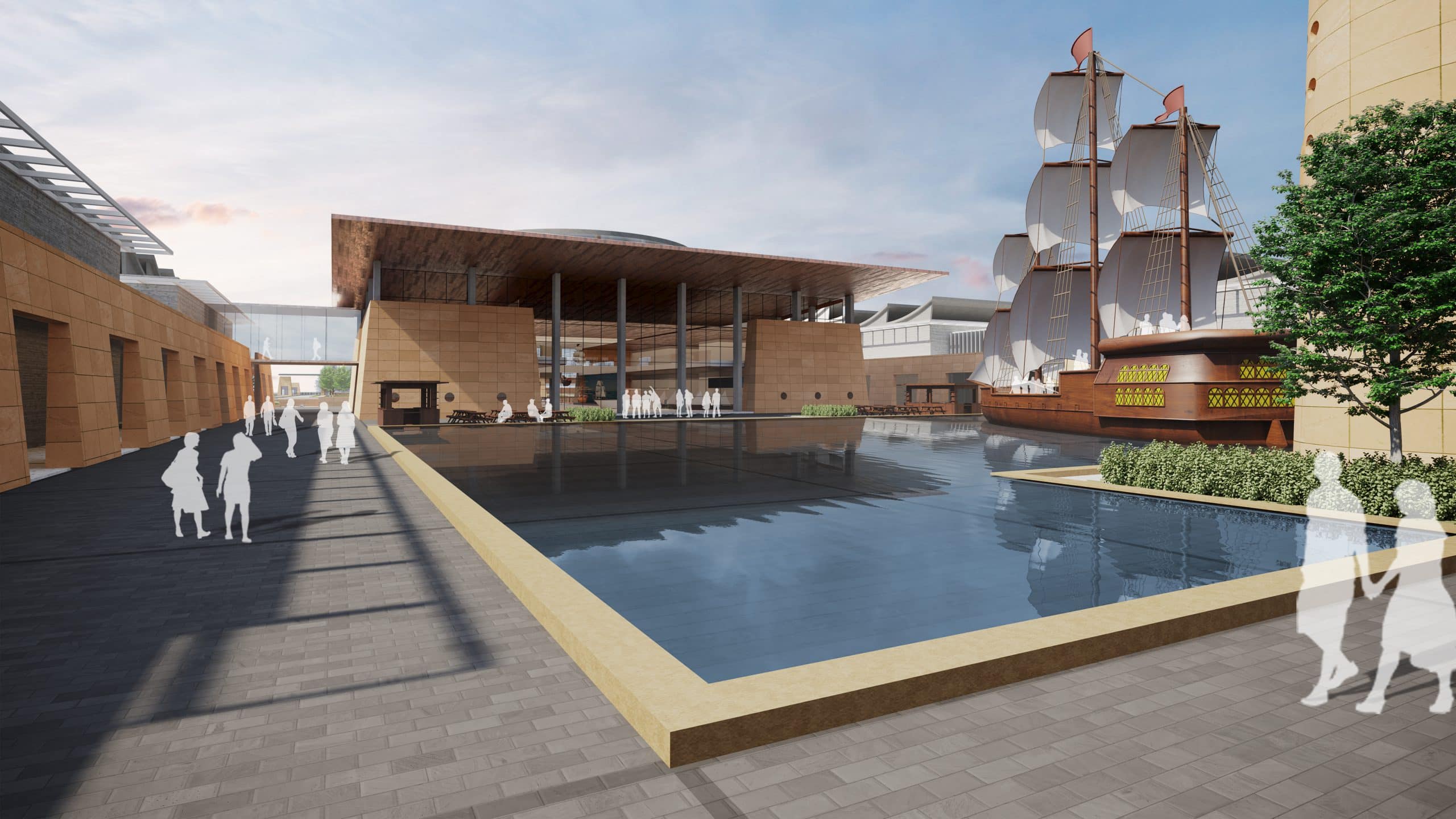
An Architecture Reflecting Ancient Roots
One of the major constituents of this complex is the National Maritime Museum having displays in 14 exhibit galleries beginning with mythological references and Harappan accounts, passing through Vedic and Mauryan periods, and tracing traditional ship-building techniques to the arrival of Vasco Da Gama and other Europeans. The exhibits include maritime activities under British rule, post-colonial India as well as present day oceanic research. Like the citadel of ancient cities, this museum complex sits as the nucleus of the central lake in Lothal’s upper town area (acropolis).
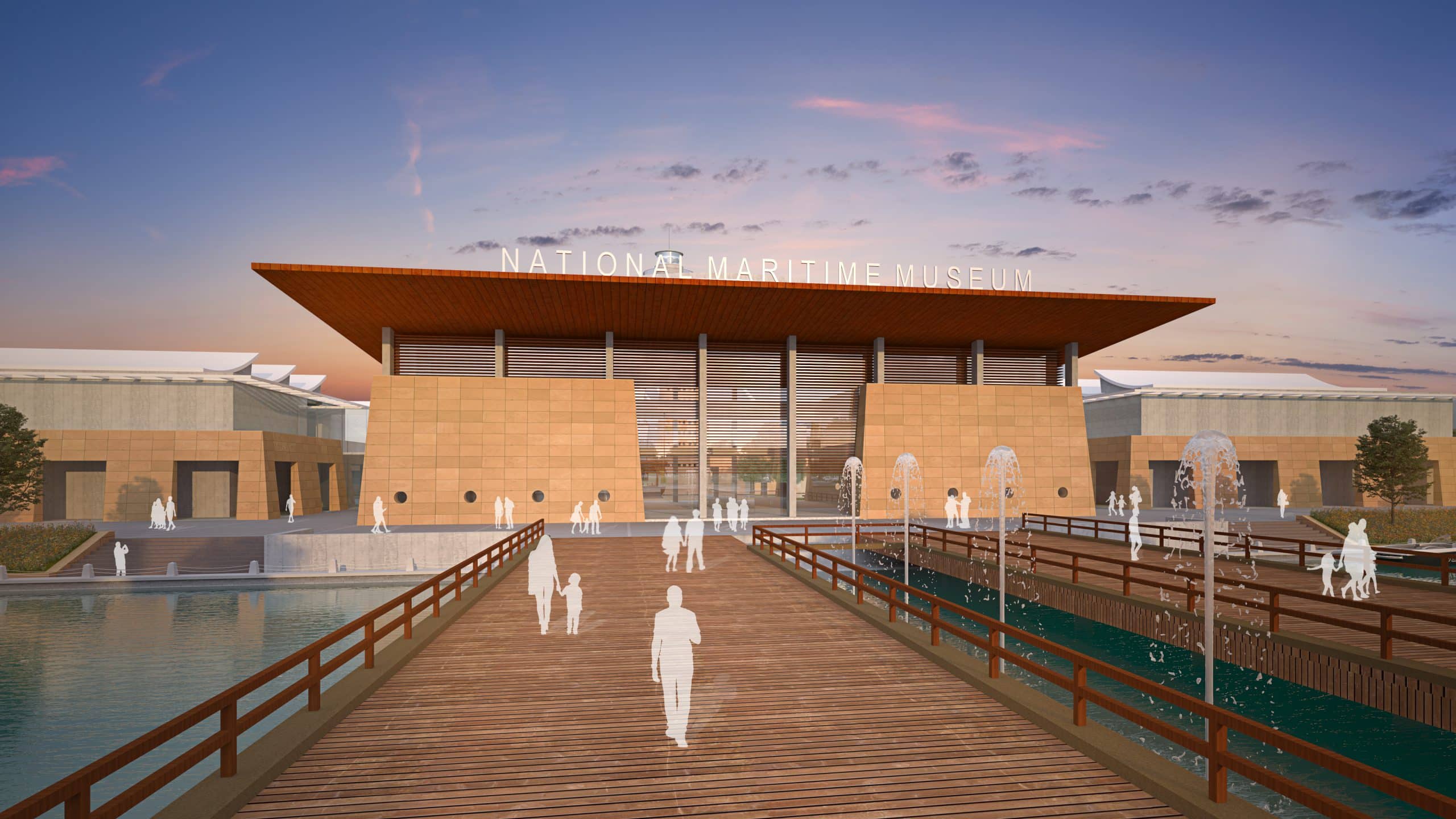
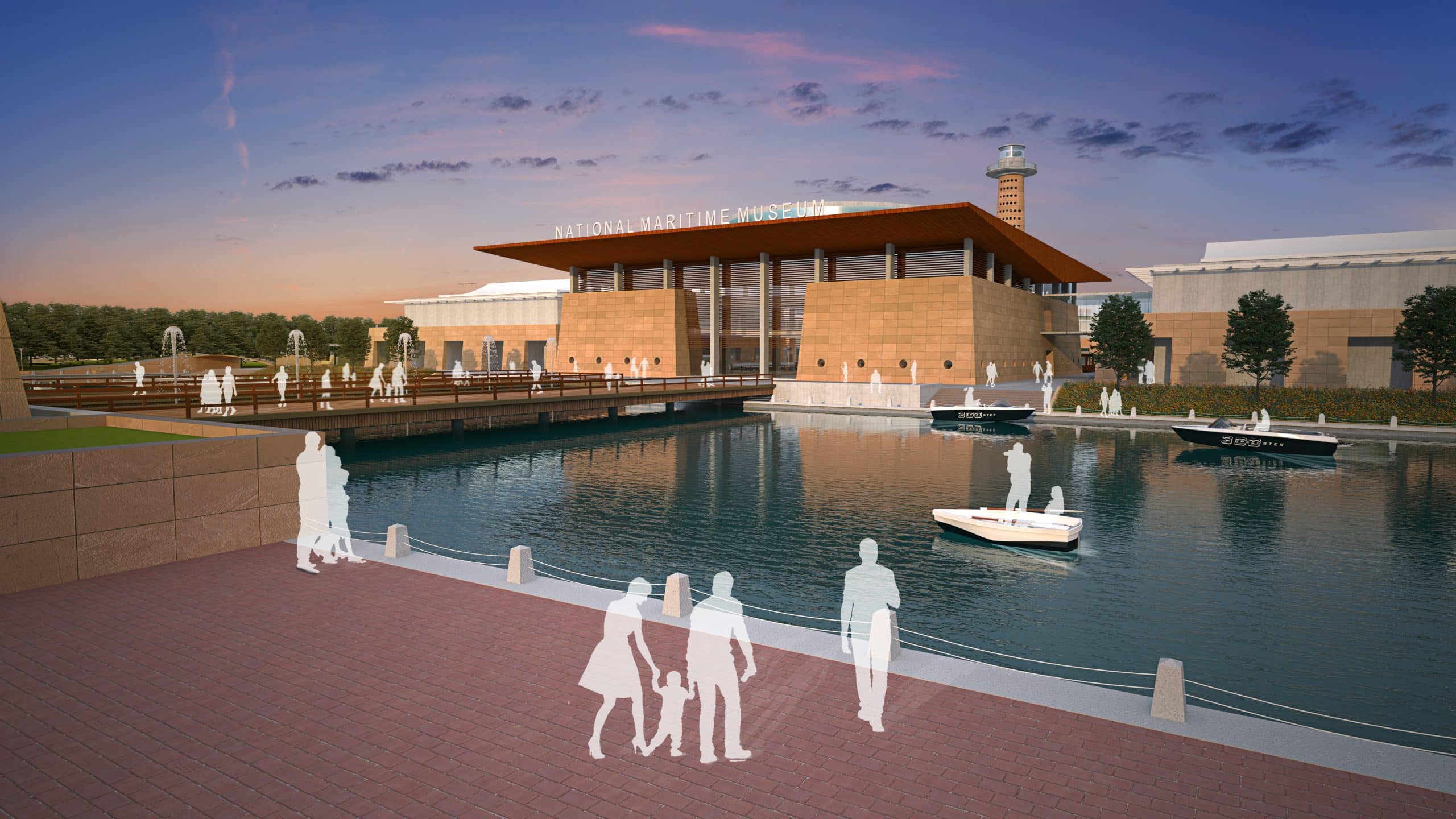
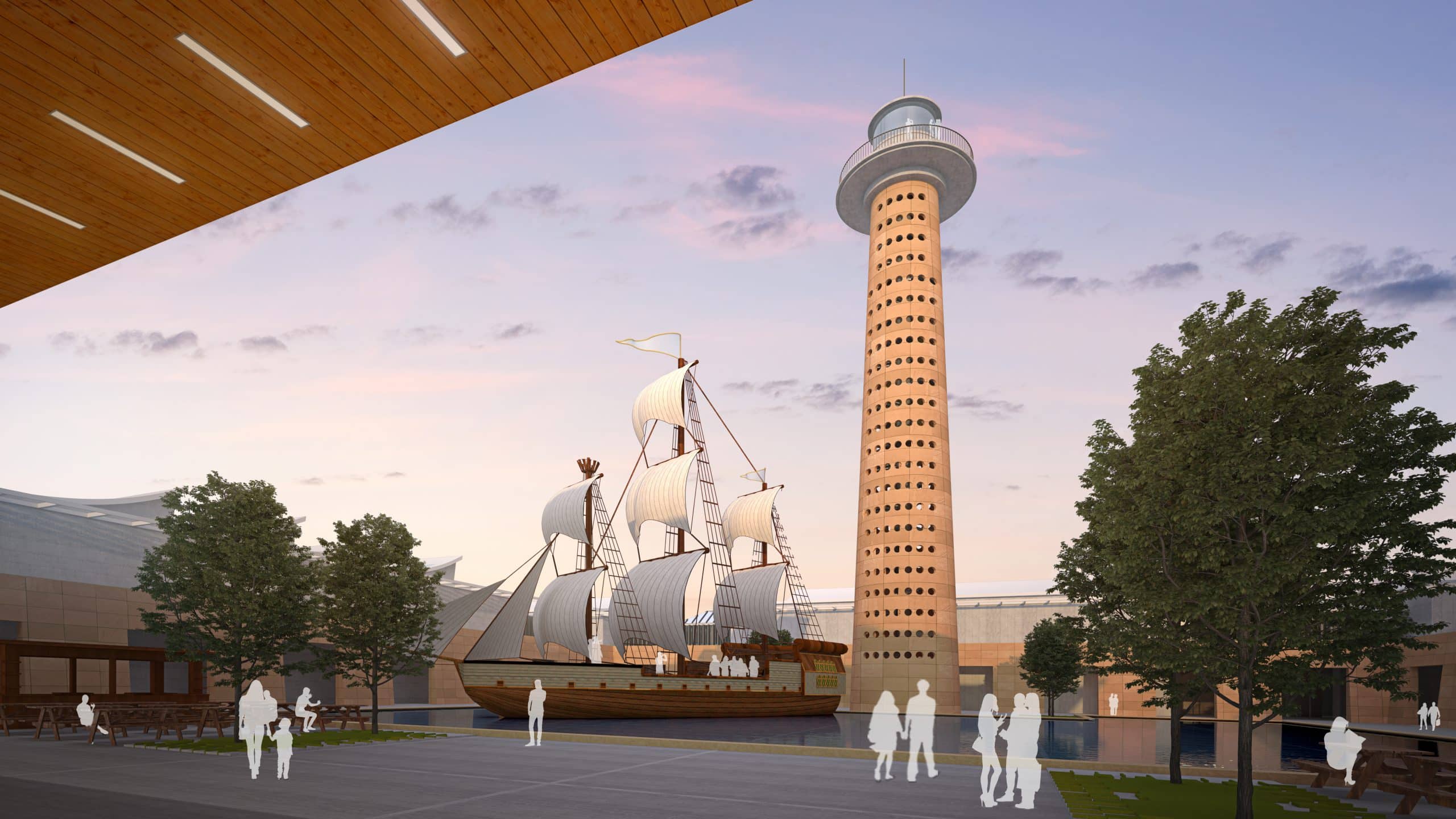
The design vision is inspired by the ancient civilization’s grid like arrangement and rich urban fabric with the museum’s blocks, having inclined outer walls clad in regional stone bricks just like the ancient dockyard and warehouse structures in Lothal. The various sectional blocks are arranged around a central open courtyard where a massive relic ship is installed over a waterbody. The roofs of the blocks pitch upwards to accommodate north-lights to illuminate the exhibits adorning the galleries’ interiors, simultaneously visually referencing a set of ships with sails aloft. As one approaches the ceremonial entrance to the structure, a massive tower with lights projecting from its peak can be seen atop the central block housing the reception lobby, akin to a lighthouse.
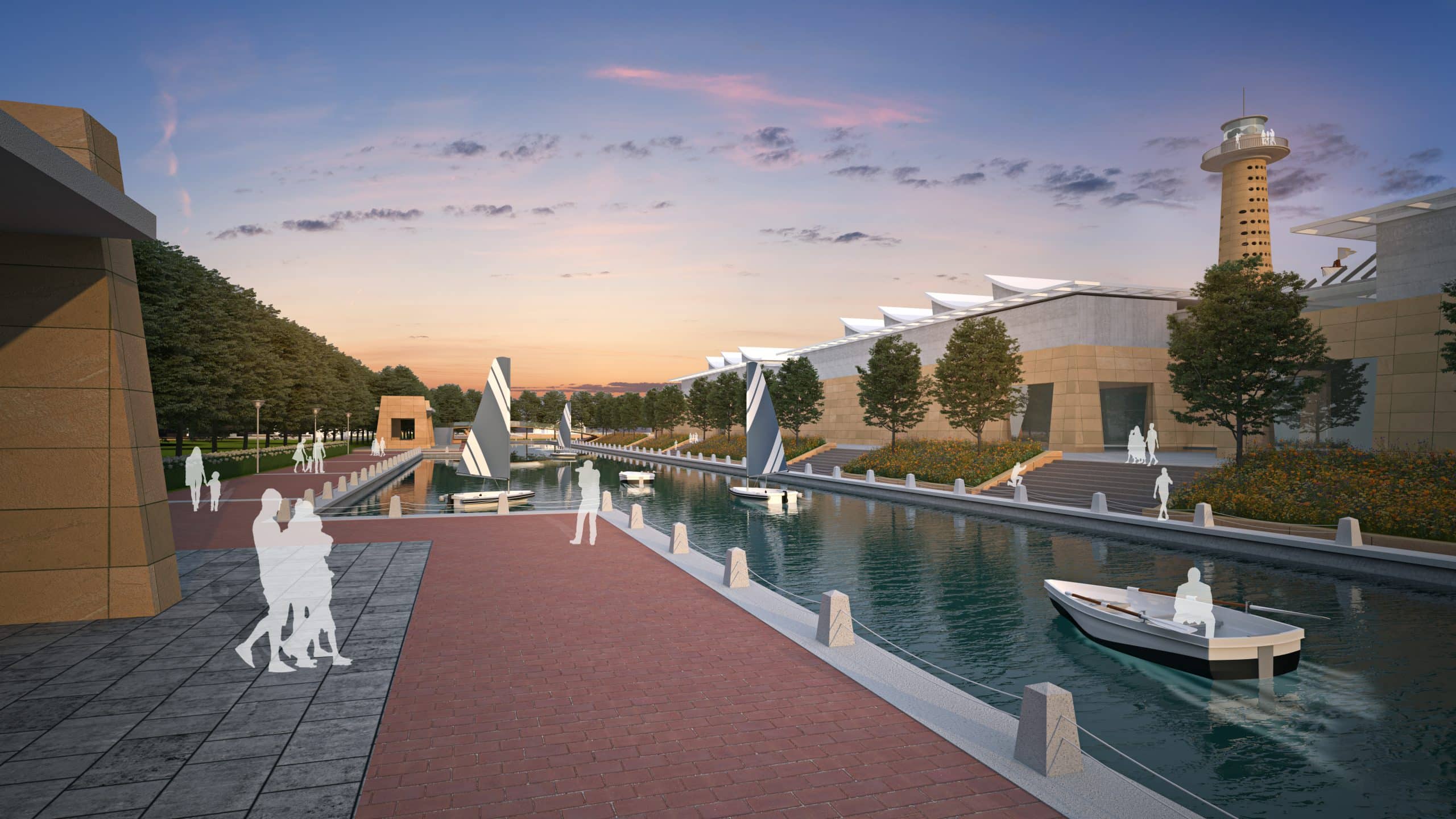
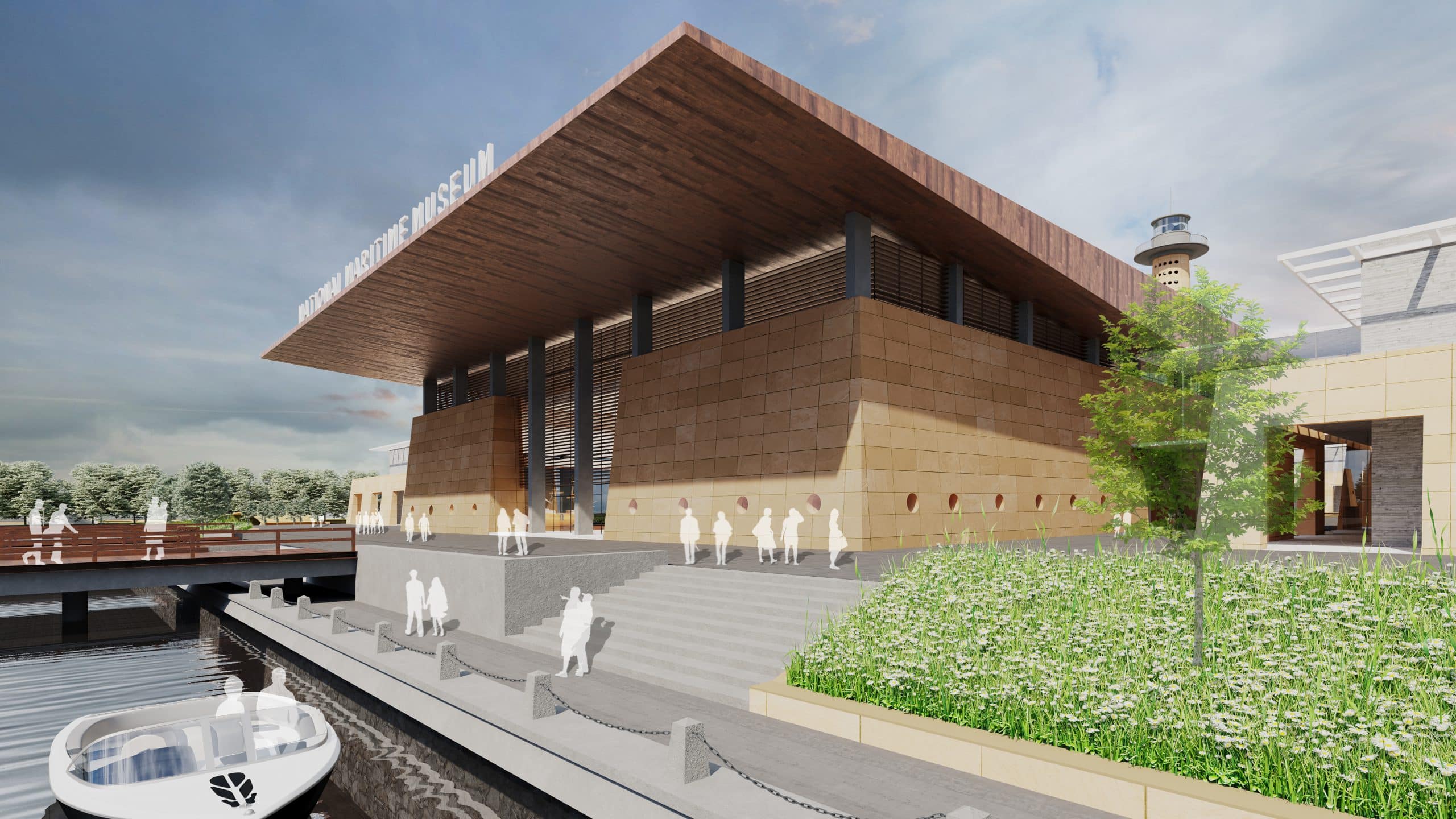
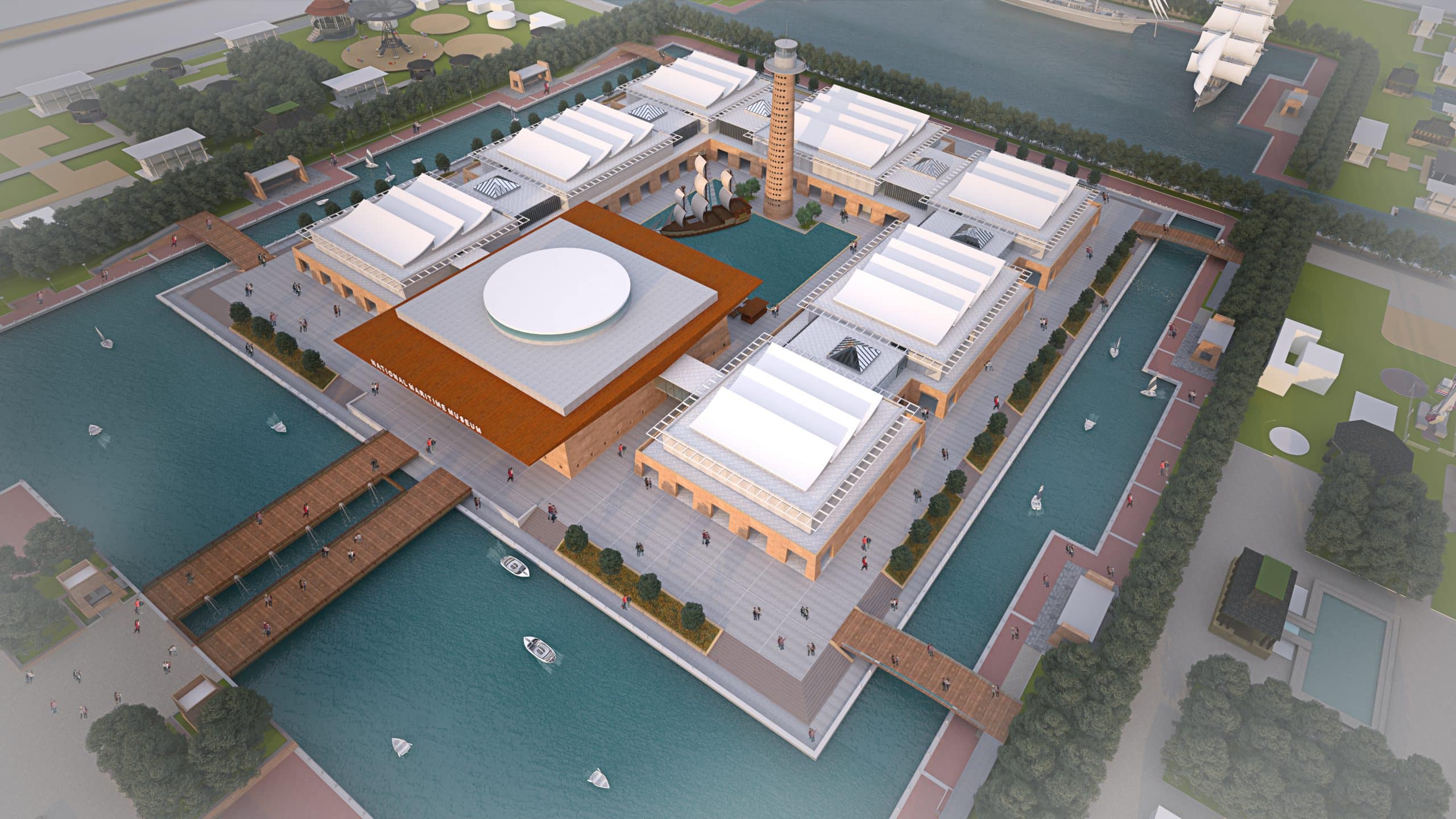
Maritime History Reconstructed with Tech Aided Immersive Experiences
Inside, many major events in maritime history and legend are reconstructed and displayed for visitors to acquaint themselves with the country’s contribution to sea-faring & ship-building and their influence on international trade activities. Audio visual and 5D technology are employed to make the visit more engaging, educative and informative.
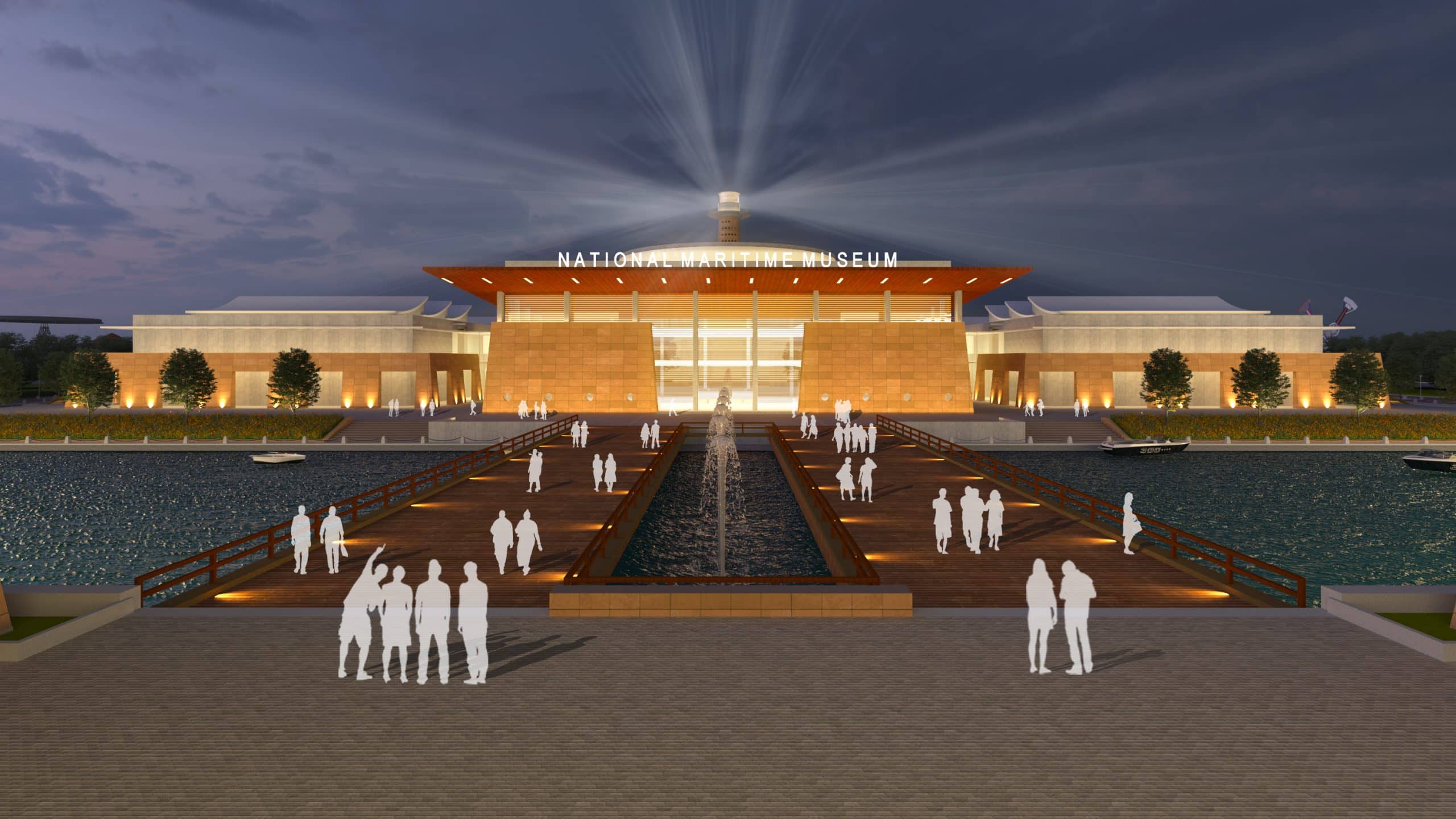
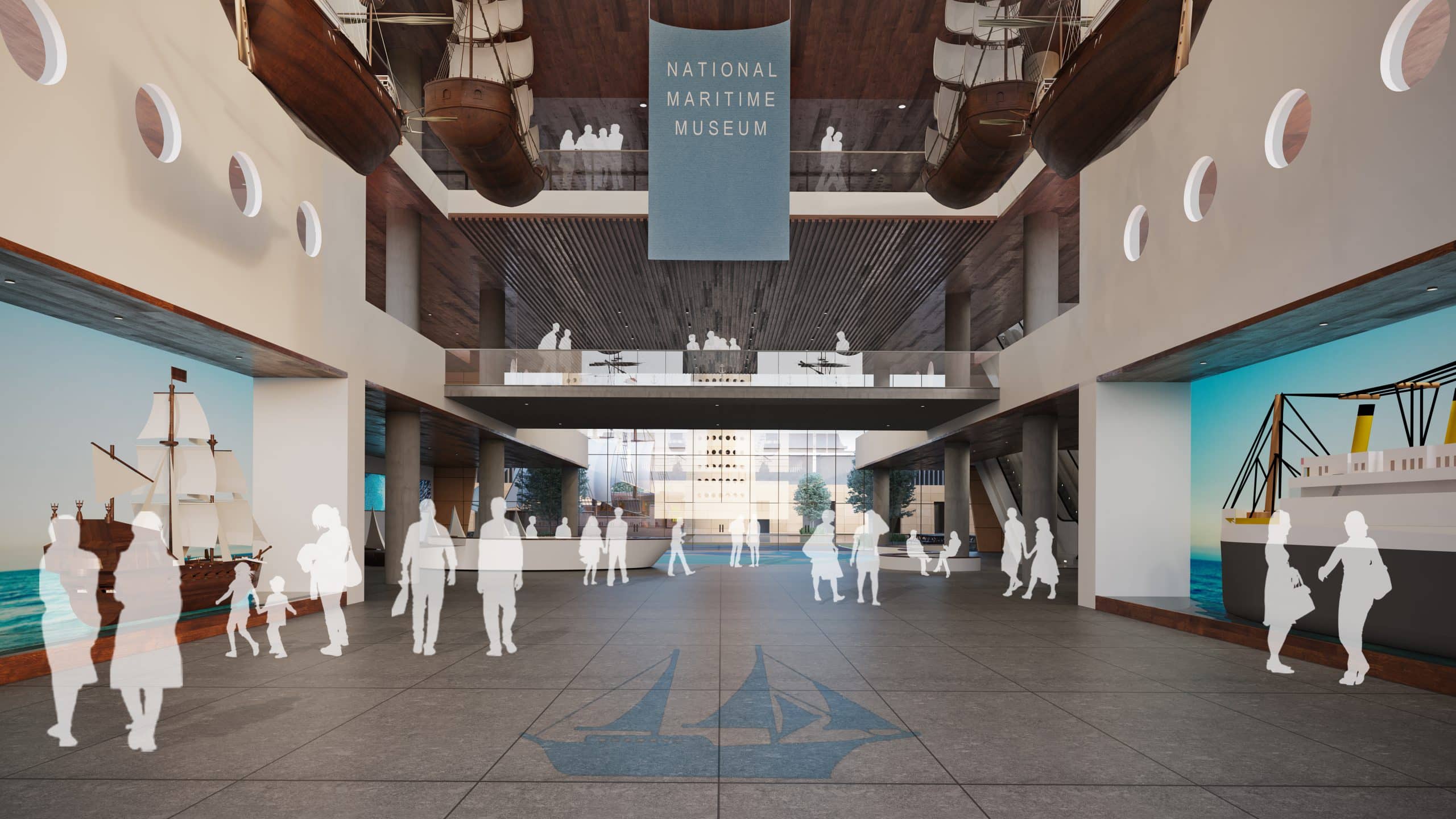
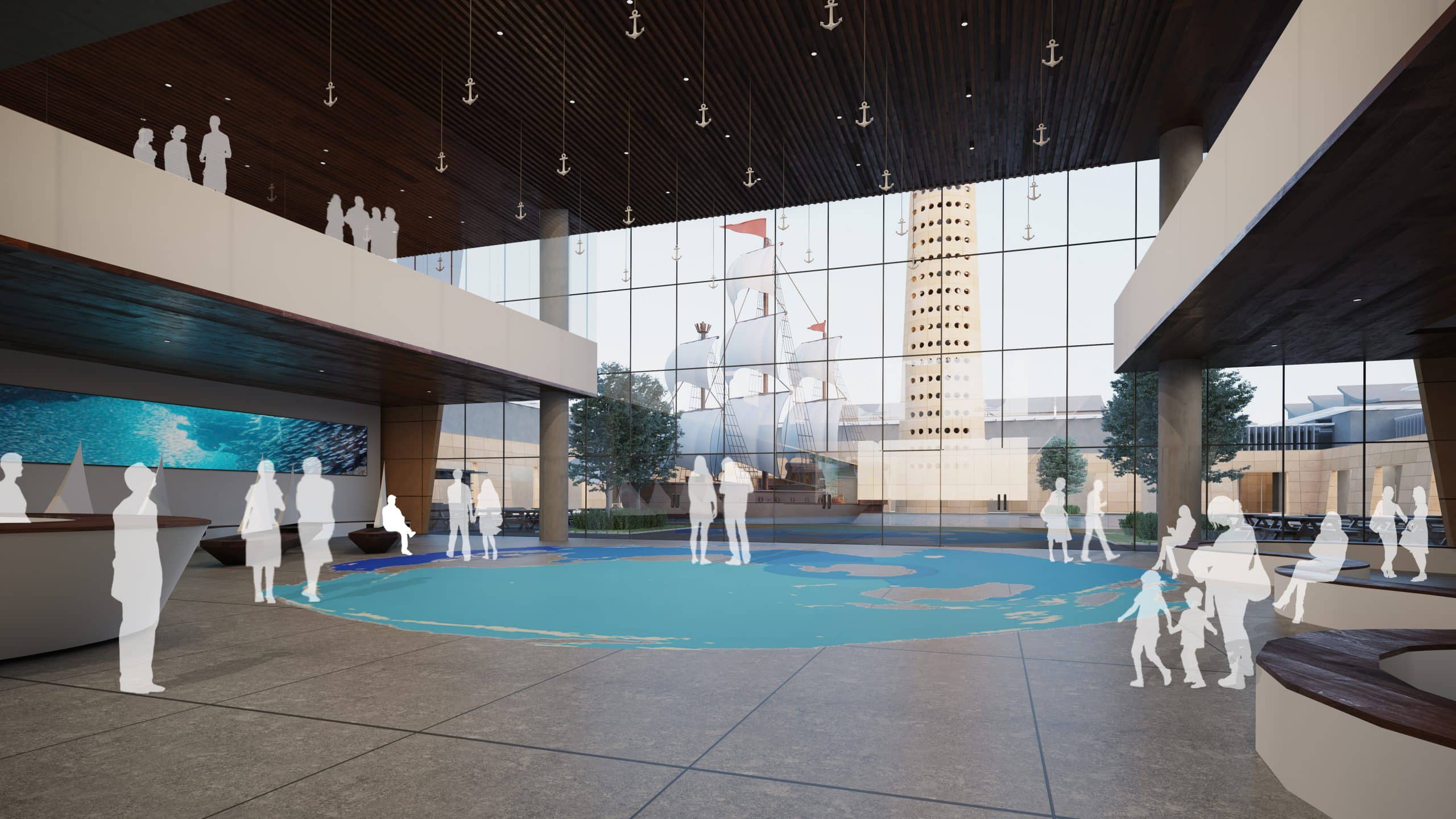
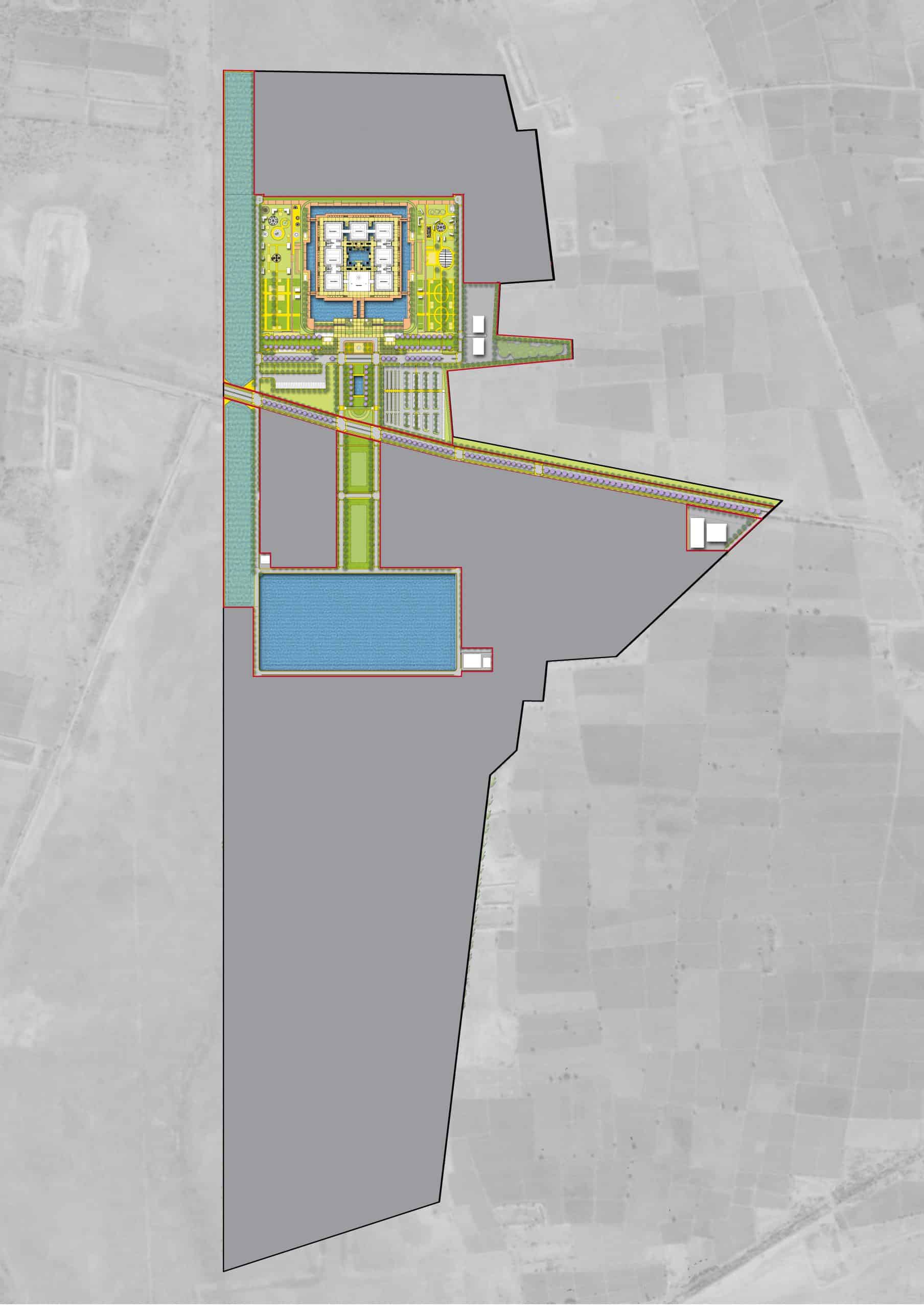
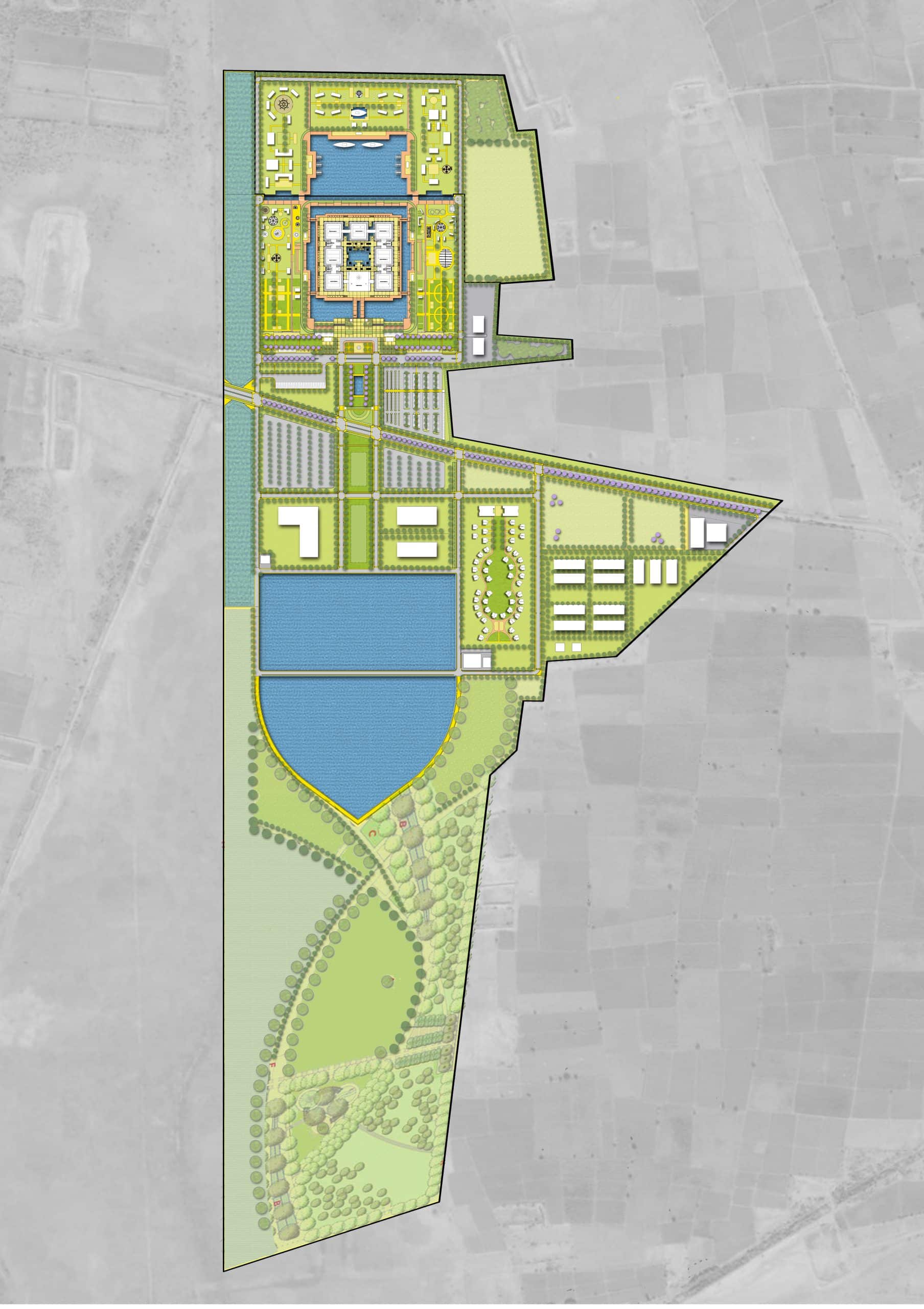
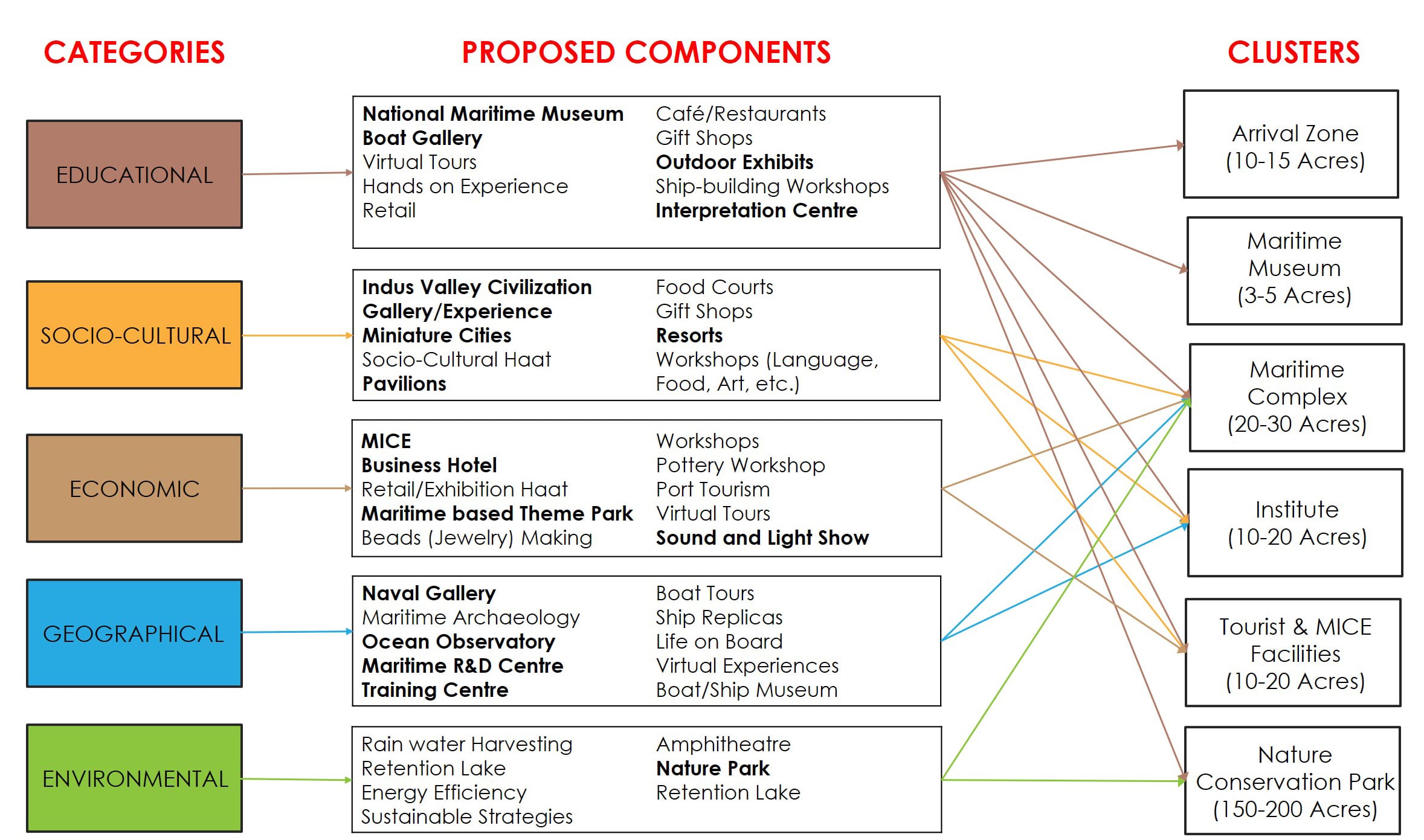
“Architectural Place-Making to Engage People in Immersive, Info-training Experiences.”

